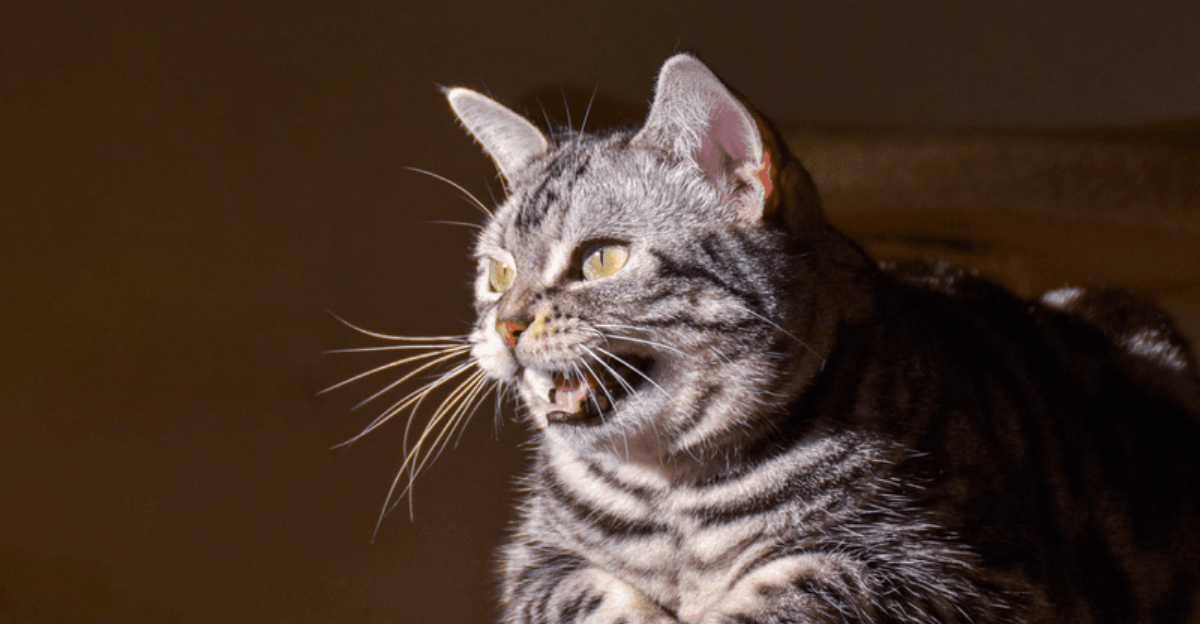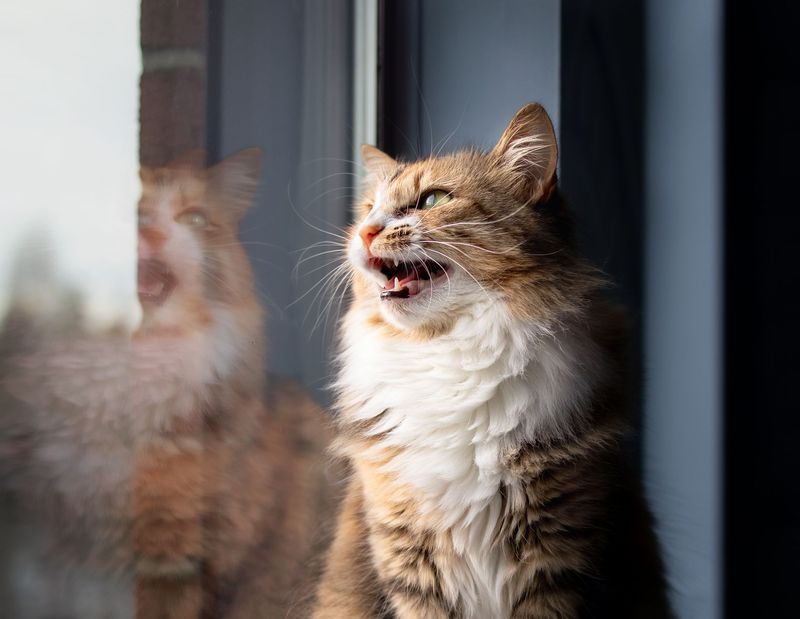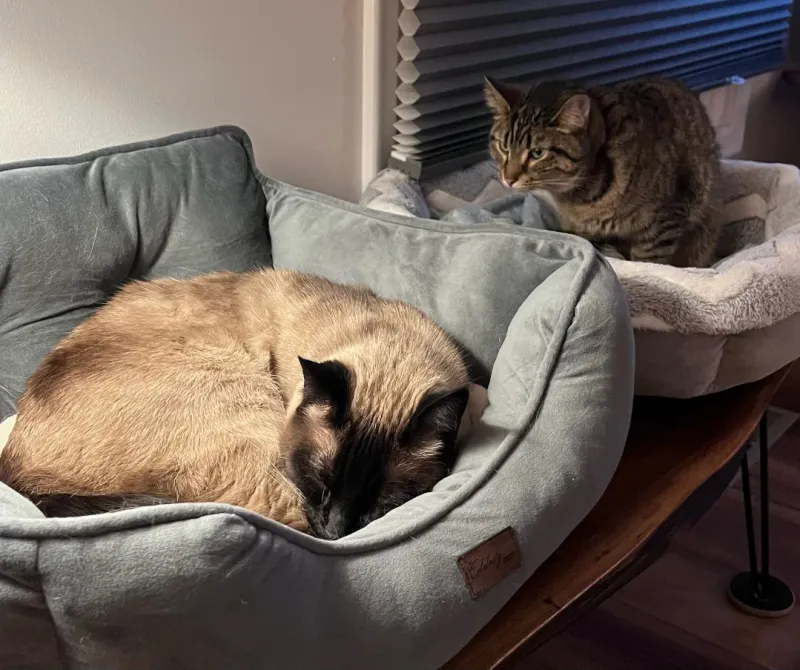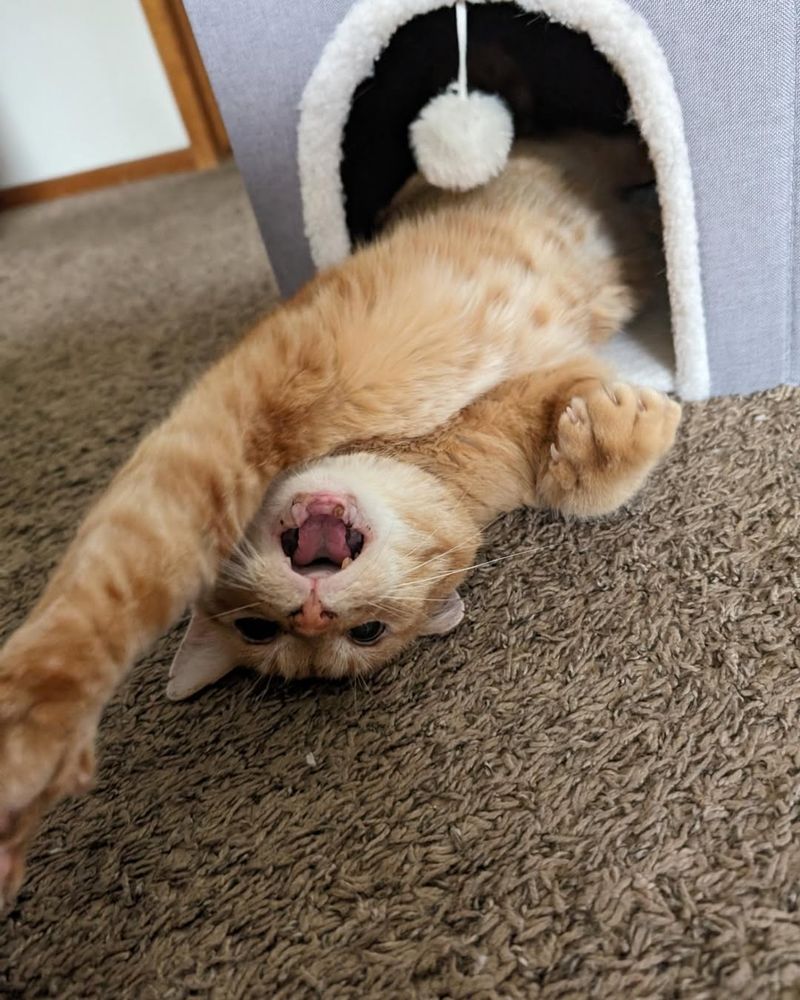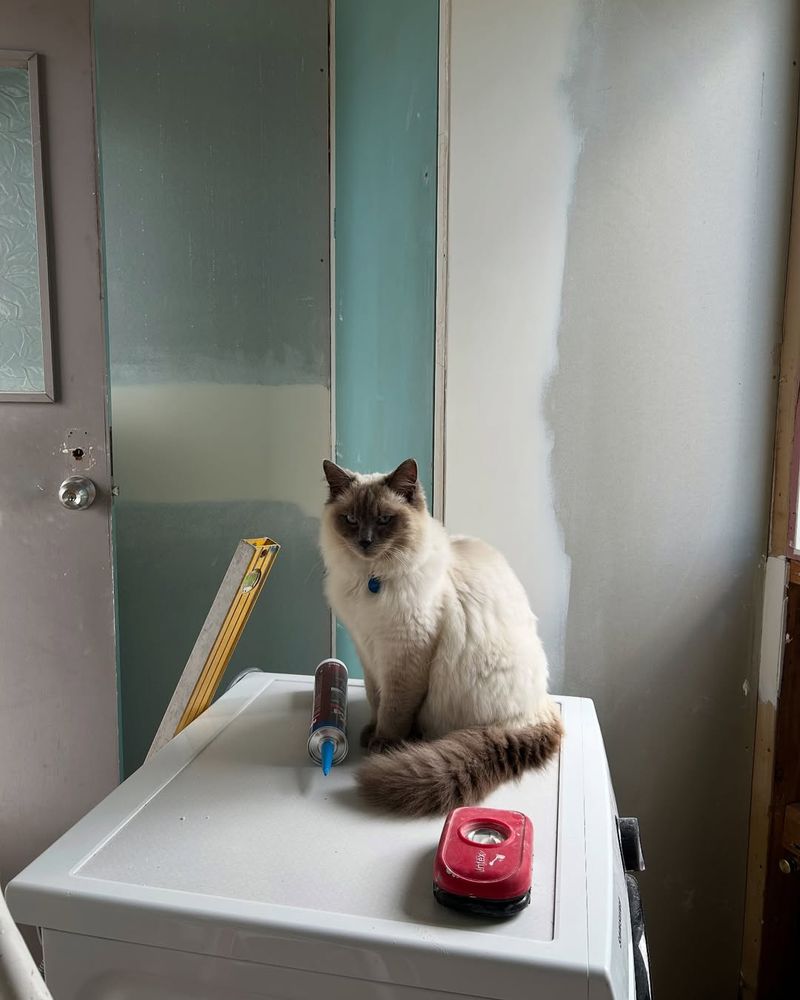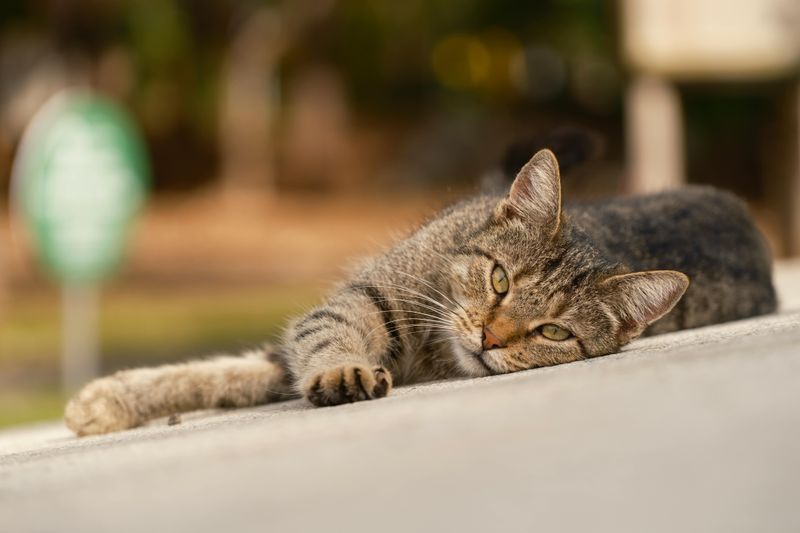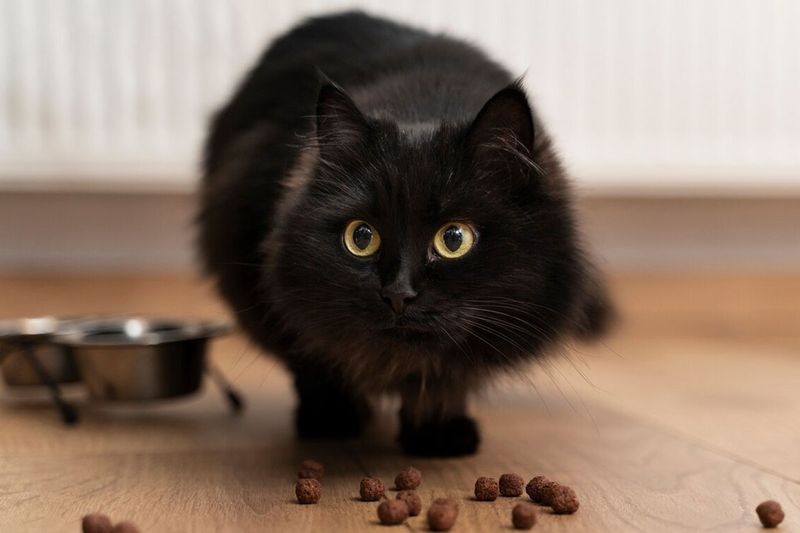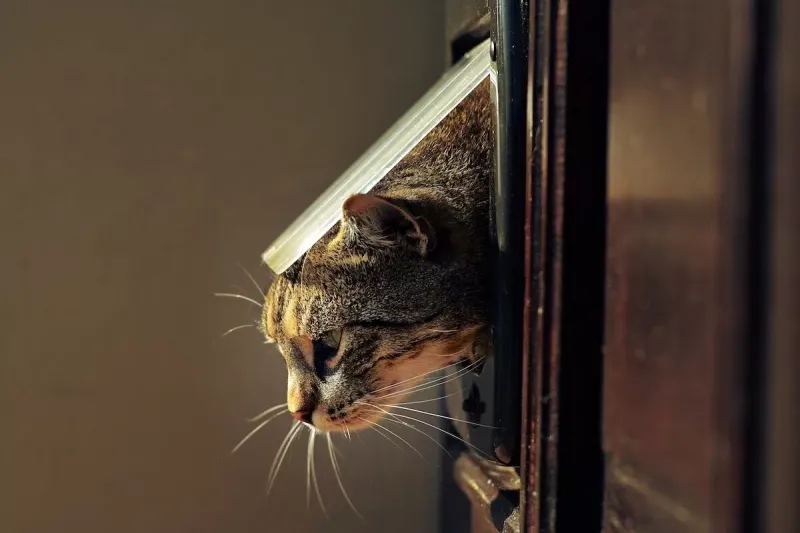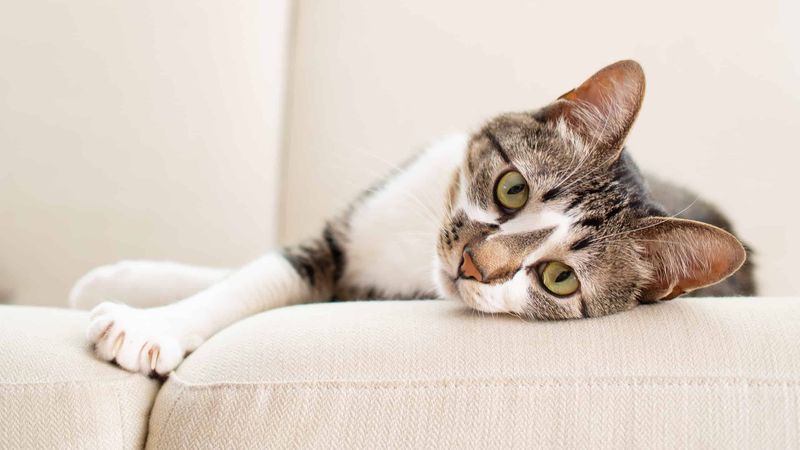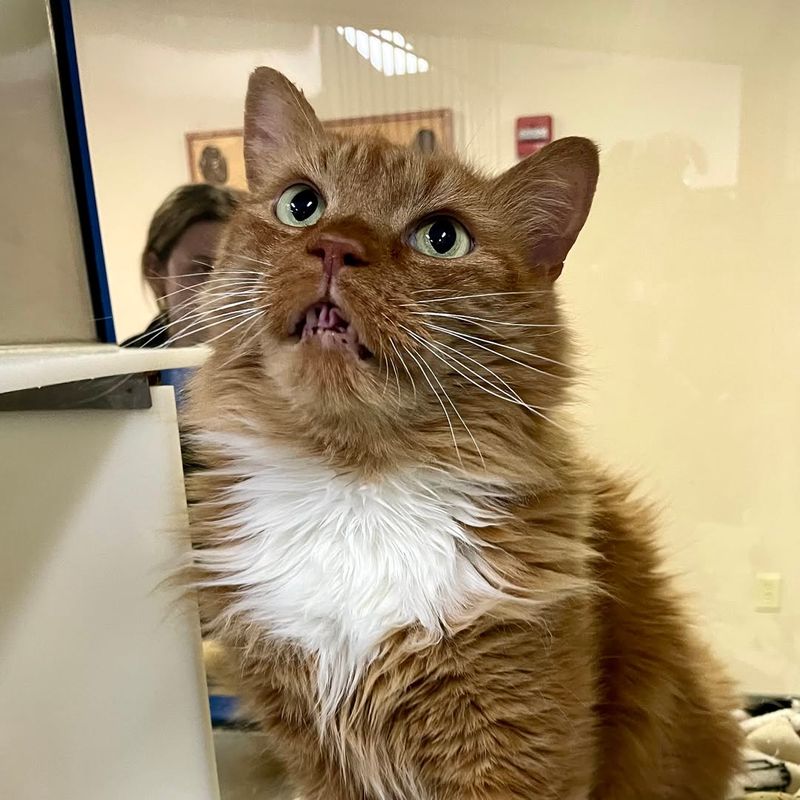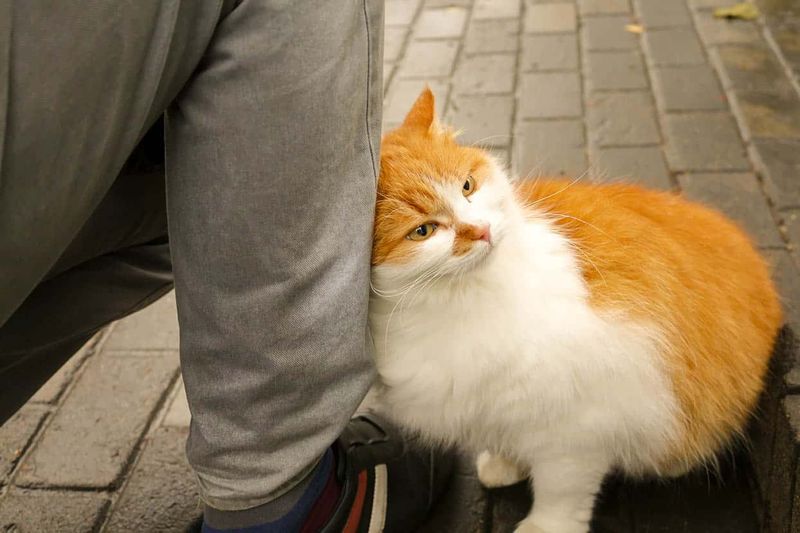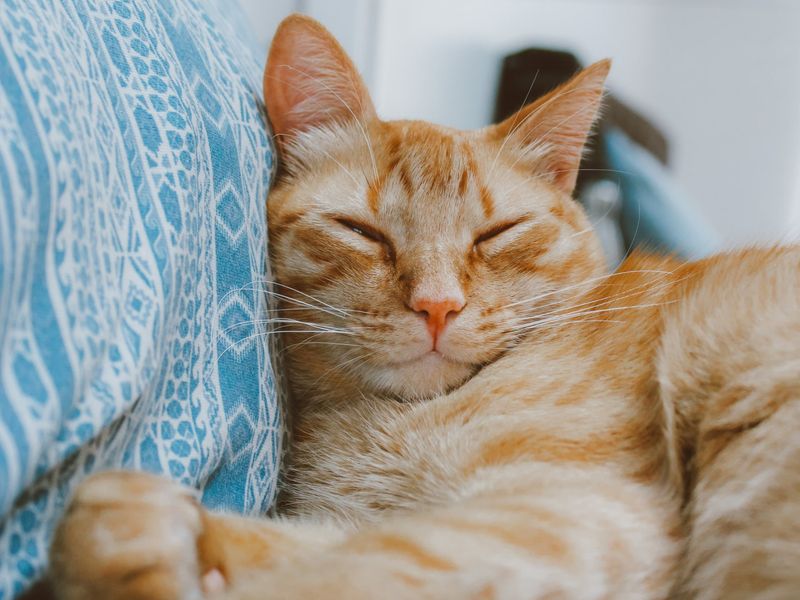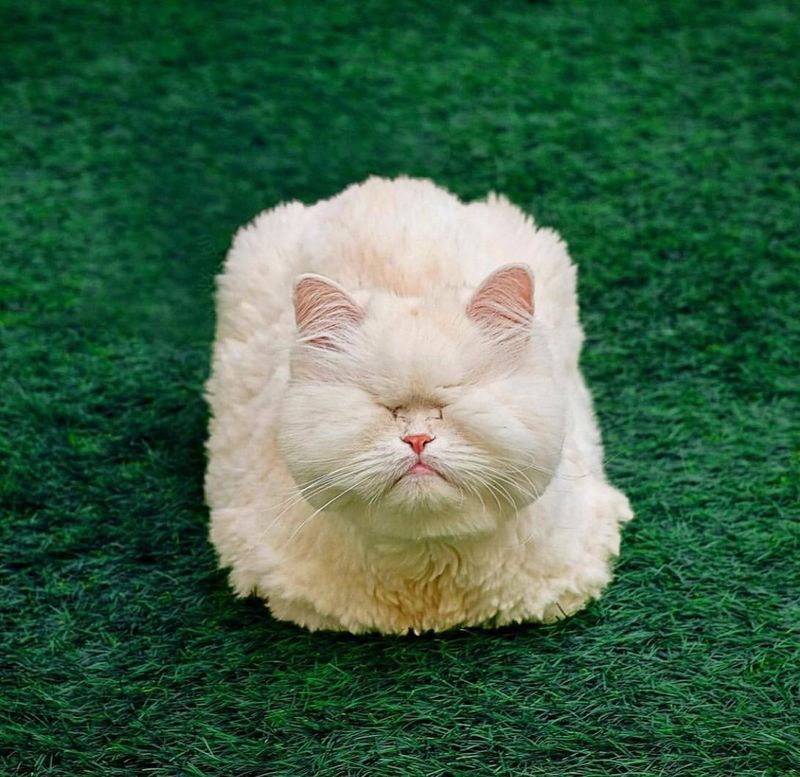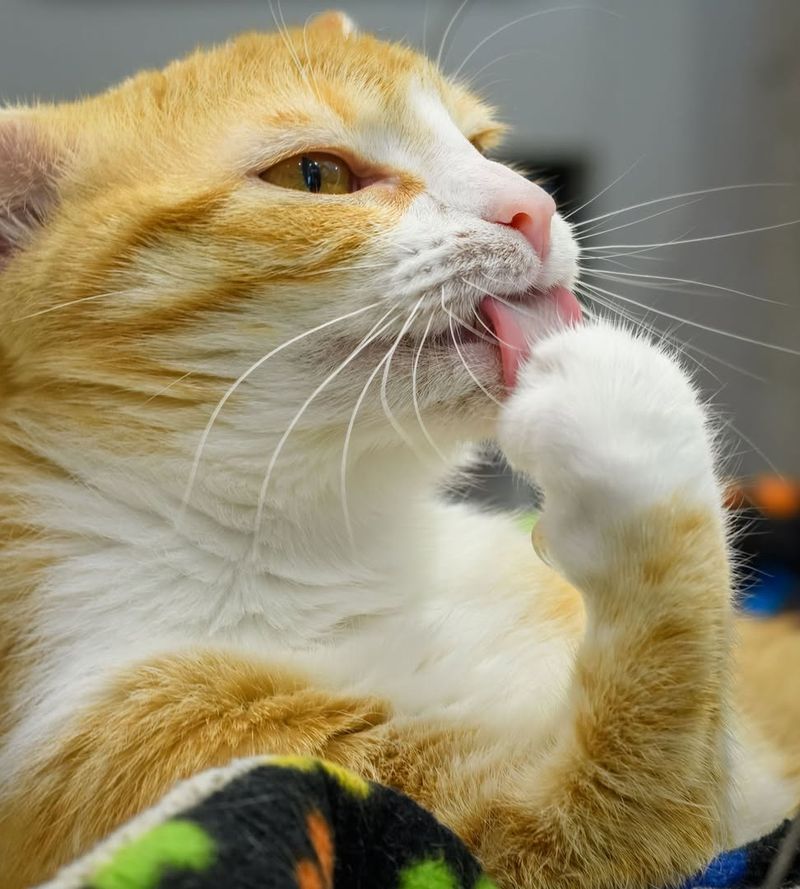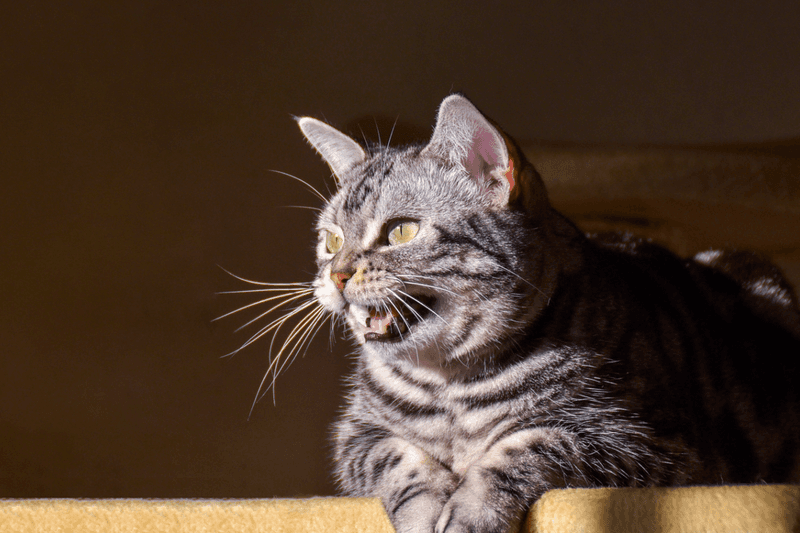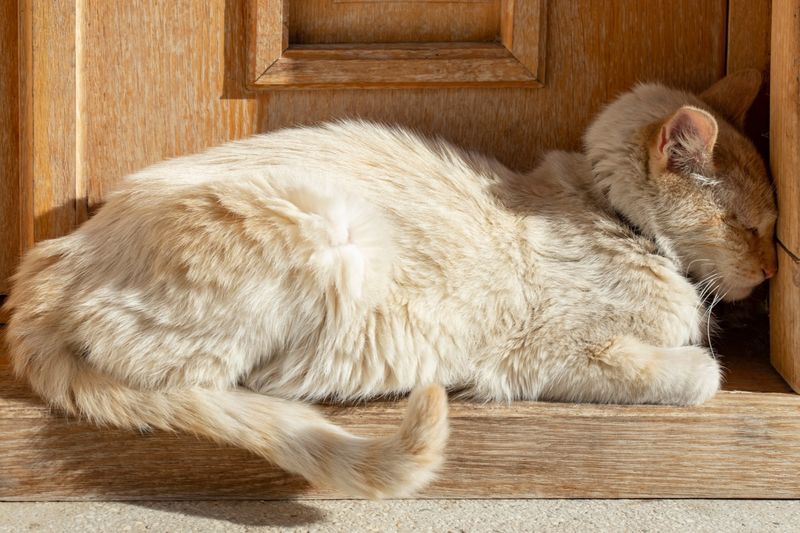📖 Table of Content:
- 1. Chattering at Birds or Bugs
- 2. Staring at You While You Sleep
- 3. Randomly Zooming Around the House (aka Cat Zoomies)
- 4. Knocking Things Off Tables for No Reason
- 5. Slow Blinking at You
- 6. Covering Their Food with Imaginary Dirt
- 7. Sleeping in Tiny, Uncomfortable-Looking Places
- 8. Smacking Their Tail on the Ground Repeatedly
- 9. Sitting with Their Mouth Slightly Open (Flehman Response)
- 10. Rubbing Their Face on Corners and Objects
- 11. Purring While Biting You
- 12. Sitting Like a Loaf (Tucked Paws Under Their Body)
- 13. Shaking Their Paws After Stepping on Certain Surfaces
- 14. Chirping Instead of Meowing
- 15. Sleeping with Their Head Pressed Against a Wall
Felines display a wide range of fascinating behaviors that often leave their owners both amused and confused. Some actions may seem playful, while others appear completely random or even mysterious. However, each behavior carries a unique meaning that reflects a cat’s instincts, emotions, or communication style.
From quirky habits like chattering at birds to the curious act of slow blinking, every feline action has a deeper explanation. Some behaviors stem from their wild ancestry, while others are ways they express trust, affection, or even frustration. Recognizing these signals can help owners better understand their cat’s needs and personality.
By decoding these unusual behaviors, you can strengthen your bond with your feline companion and provide a more enriching environment. Learning why cats do what they do allows for better interactions and a happier, healthier pet. Whether it’s responding appropriately to zoomies or understanding why your cat loafs, each insight brings you closer to your furry friend.
1. Chattering at Birds or Bugs
This peculiar behavior, often observed when a cat sits by the window watching birds or insects, involves a rapid jaw movement. Some experts believe that this could mimic the “kill bite” cats use on their prey. It is a blend of excitement and frustration, as the cat can’t reach its target. In a way, it’s your cat showing its primal hunting skills. Interestingly, this behavior also reflects your cat’s sharp instincts. If your cat often chatters, consider providing interactive toys to satisfy its hunting urge indoors.
2. Staring at You While You Sleep
Cats are curious creatures, and their stare while you sleep can seem intense. This behavior is often driven by affection, curiosity, or simply a habit of monitoring their environment. They might watch over you as a protective measure, ensuring all is well. Alternatively, they could just be intrigued by your sleeping form and the changes in your breathing. Understanding this behavior helps you appreciate their silent companionship. If the staring feels unsettling, gently redirect their attention with toys before bedtime.
3. Randomly Zooming Around the House (aka Cat Zoomies)
The “zoomies” are those sudden bursts of energy where your cat races around the house. This is often a way to expend pent-up energy, especially if your cat has been indoors all day. It might happen after using the litter box or during night hours when their wild ancestors would be most active. These episodes are normal and indicate a healthy, energetic cat. Providing regular playtime can help manage these bursts. Understanding zoomies helps you create a stimulating environment that meets your cat’s activity needs.
4. Knocking Things Off Tables for No Reason
Cats often knock items off tables, seemingly for no reason. This behavior can stem from curiosity, playfulness, or simply because they enjoy your reactions. It’s their way of exploring how objects behave when they hit the ground. It could also be a call for attention. To mitigate this behavior, ensure your cat has plenty of toys and engage in interactive play. Understanding this behavior can help you protect precious items by providing alternatives that cater to your cat’s inquisitive nature.
5. Slow Blinking at You
When a cat gives you a slow blink, it’s a gesture of trust and affection, akin to a “cat kiss.” This behavior indicates that your cat feels safe and content in your presence. You can reciprocate this gesture to strengthen the bond between you and your feline friend. Try slowly blinking back at your cat to communicate in their language. This subtle interaction builds a deeper connection and reinforces trust. Understanding this silent communication can enrich your relationship with your cat.
6. Covering Their Food with Imaginary Dirt
Some cats display an instinct to “bury” their leftover food, a behavior inherited from their wild ancestors. This act is not only about saving food for later but also about hiding it from potential scavengers. It reflects a survival instinct ingrained in cats. While it may look amusing, it’s a glimpse into their natural instincts. To manage this, consider portion control to prevent leftovers. Understanding this behavior helps you appreciate the deep-seated instincts that still play a role in your domesticated cat’s life.
7. Sleeping in Tiny, Uncomfortable-Looking Places
Cats often choose small, enclosed spaces to sleep, which can look uncomfortable to us. This is because such spaces offer security and warmth, mimicking dens in the wild. These spots provide a sense of protection from predators and environmental threats. Choosing these spaces shows your cat’s natural preference for safety. If your cat seems content, there’s no need to worry. However, providing cozy beds in similar locations can make their sleep more comfortable while respecting their need for security.
8. Smacking Their Tail on the Ground Repeatedly
Unlike dogs, a wagging tail in cats doesn’t usually signal happiness. When a cat smacks its tail on the ground, it often indicates annoyance, irritation, or overstimulation. Paying attention to this behavior can prevent miscommunication and potential bites or scratches. It’s an important part of reading your cat’s mood. If you notice this tail movement, give your cat some space to relax. Respecting their signals helps maintain harmony and understanding between you and your pet.
9. Sitting with Their Mouth Slightly Open (Flehman Response)
Known as the Flehman response, when a cat sits with its mouth open, it’s using the Jacobson’s organ to analyze scents. This behavior is a way to process pheromones, providing more information about their surroundings or another animal. It’s a fascinating glimpse into a cat’s sensory world. If you observe this, know your cat is gathering information, much like reading a book. Encouraging this natural curiosity with safe exploration can enrich their environment and keep them mentally stimulated.
10. Rubbing Their Face on Corners and Objects
Cats have scent glands in their cheeks, and when they rub their face on objects, they’re marking their territory. This behavior is a way of claiming ownership and making the environment familiar with their scent. It’s also a comforting activity that helps them feel secure. Recognizing this behavior as a natural expression of ownership helps you understand your cat’s need for a territory. Providing a stable environment with plenty of marking opportunities ensures your cat feels at home.
11. Purring While Biting You
This seemingly contradictory behavior can be a sign of overstimulation. What starts as affectionate purring can sometimes turn into play aggression. It’s essential to recognize the signs leading up to this behavior to avoid accidental bites. Observe your cat’s body language to discern when it’s time to switch from petting to playing. Understanding this dynamic helps you manage interactions, ensuring both you and your cat enjoy your bonding time without misunderstanding each other’s signals.
12. Sitting Like a Loaf (Tucked Paws Under Their Body)
When a cat assumes the “loaf” position, it signifies relaxation and security. By tucking their paws under their body, cats keep warm and protect themselves while resting. This position shows that your cat feels safe and content in its environment. Observing this behavior reassures you of your cat’s comfort. You can enhance this sense of security by providing cozy resting places. Understanding the loaf position helps you gauge your cat’s comfort level and provides insights into its sense of safety.
13. Shaking Their Paws After Stepping on Certain Surfaces
Cats are particular about textures and may shake their paws if they dislike the sensation of certain surfaces. Wet floors, sticky substances, or unfamiliar textures can trigger this reaction. It’s their way of expressing discomfort. Observing paw shaking helps you understand your cat’s preferences and aversions. Providing alternative pathways or surfaces can alleviate their discomfort. This awareness allows you to create a more cat-friendly environment, accommodating their sensitive nature and ensuring they feel comfortable.
14. Chirping Instead of Meowing
Chirping is a form of communication in cats, often reflecting excitement or a request for attention. Unlike meowing, which is more direct, chirping is softer and often used when addressing humans or other animals. This behavior is a friendly invitation to interact. Responding to your cat’s chirps with attention or playtime strengthens your bond. Understanding chirping as a unique communication style helps you engage with your cat effectively, enhancing your relationship through shared interaction and responsive companionship.
15. Sleeping with Their Head Pressed Against a Wall
While this behavior might look odd, it often indicates a deep state of relaxation. Cats may press their heads against a wall for warmth or comfort, similar to how they choose enclosed spaces for security. However, if this becomes frequent and is coupled with other unusual behaviors, it might suggest a medical issue, such as a neurological condition. Observing your cat’s overall health and behavior ensures you can distinguish between normal quirks and signs of distress, allowing for timely veterinary consultation if necessary.
